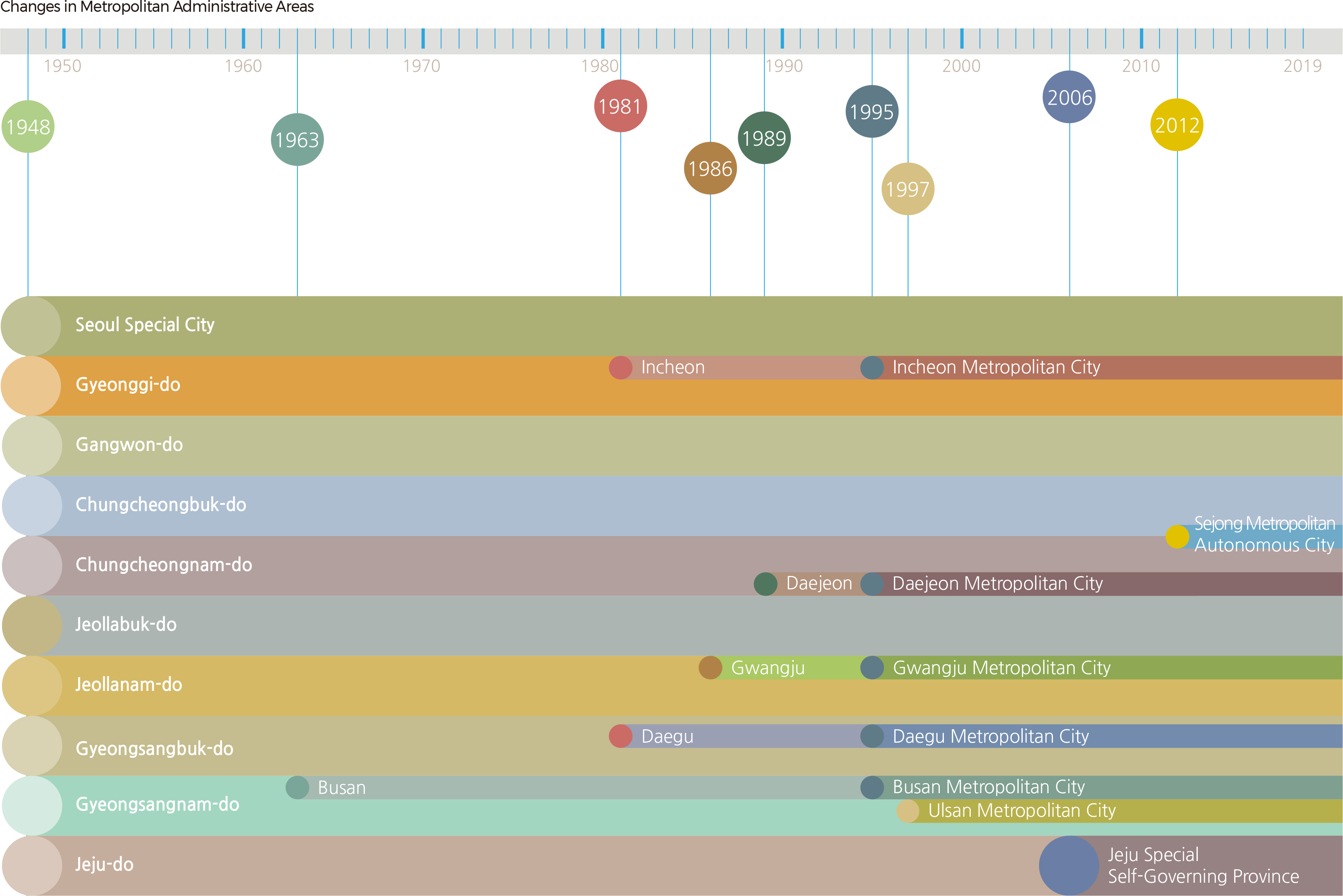English I 2019
Administrative districts are governmental units for local administration, but at the same time, they define regional and local identity. Since the nation’s founding, Korea has promoted administrative efficiency and aligned living spaces and administrative units through many administrative reorganizations. During these changes, the do-oriented (province-oriented) administrative district system used during the Joseon Dynasty became the basis for Korea’s modern metropolitan administrative system. The administrative system was comprised of one special city, 15 dos (provinces), 23 bus (cities), and 218 guns (counties) in 1945. The following year, Jeju Island was separated from Jeollanam-do, and in 1948, the term “bu” was replaced by “si.”
In 1962, the Korean government carried out a comprehensive reform to harmonize the living spaces and administrative districts. For example, Geumsan-gun in Jeollabuk-do was transferred to Chungcheongnam-do, and Uljin-gun in Gangwon-do was merged into Gyeongsangbuk-do. Reforms after 1960 mainly took place due to urban expansion and the associated suburbanization. Small towns attained cityhood as population increased, and major cities were promoted to directly-controlled municipalities so that the central government could manage them directly. During the 1960s, as Busan was promoted to a directly-controlled city, Korea consisted of 1 special city (Seoul), 1 directly controlled city (Busan Directly-Controlled City), 9 dos (Gyeonggi-do, Gangwon-do, Chungcheongbuk-do, Chungcheongnam-do, Jeollabuk-do, Jeollanam-do, Gyeongsangbuk-do, Gyeongsangnam-do, and Jeju-do), 30 sis (cities), and 140 guns (counties). In the 1980s, large provincial cities, like Incheon, Daegu, Gwangju, and Daejeon, became directly-controlled cities.
In 1995, an overall provincial administrative reform was carried out. This reshuffling integrated cities and counties, aimed to balance development between growing urban and declining rural areas, secured land for urban development, promoted administrative efficiency, and addressed inconsistencies between spaces of daily life and administrative districts. Since 1995, cities merged with neighboring counties and directly-controlled municipalities have been reorganized into metropolitan cities by combining neighboring areas. In 1995, forty urban-rural integration cities were established, and the following four metropolitan cities were created: Busan, Daegu, Incheon, and Daejeon. In 1997, Ulsan attained metropolitan city status.
After 2000, a continuous merging of cities and counties took place, and Jeju Island was raised to the status of a lowercase special self-governing province in 2006. Sejong, a multifunctional administrative city, became the Sejong Metropolitan Autonomous City in 2012. Now, the Republic of Korea has 17 metropolitan units, which include one teukbyeol-si (special city), six gwangyeok-sis (metropolitan cities: Gwangju, Daegu, Daejeon, Busan, Ulsan, and Incheon), one teukbyeol jachi-si (special autonomous city: Sejong), eight dos (provinces: Gangwon-do, Gyeonggi-do, Gyeongsangnam-do, Gyeongsangbuk-do, Jeollanam-do, Jeollabuk-do, Chungcheongnam-do, and Chungcheongbuk-do), and one teukbyeol jachi-do (special self-governing autonomous province: Jeju). |
